Get PeakVisor App
Sign In
Search by GPS coordinates
- Latitude
- ° ' ''
- Longitude
- ° ' ''
- Units of Length

Yes
Cancel
Share ×

Scan the QR code and open PeakVisor on your phone
❤ Wishlist ×
Choose
Delete
Ramble through vibrant tulip fields and lush forests when you visit the Netherlands. There are 593 named mountains in the Netherlands. The highest and most prominent mountain is Mount Scenery (887 m/2,910 ft).
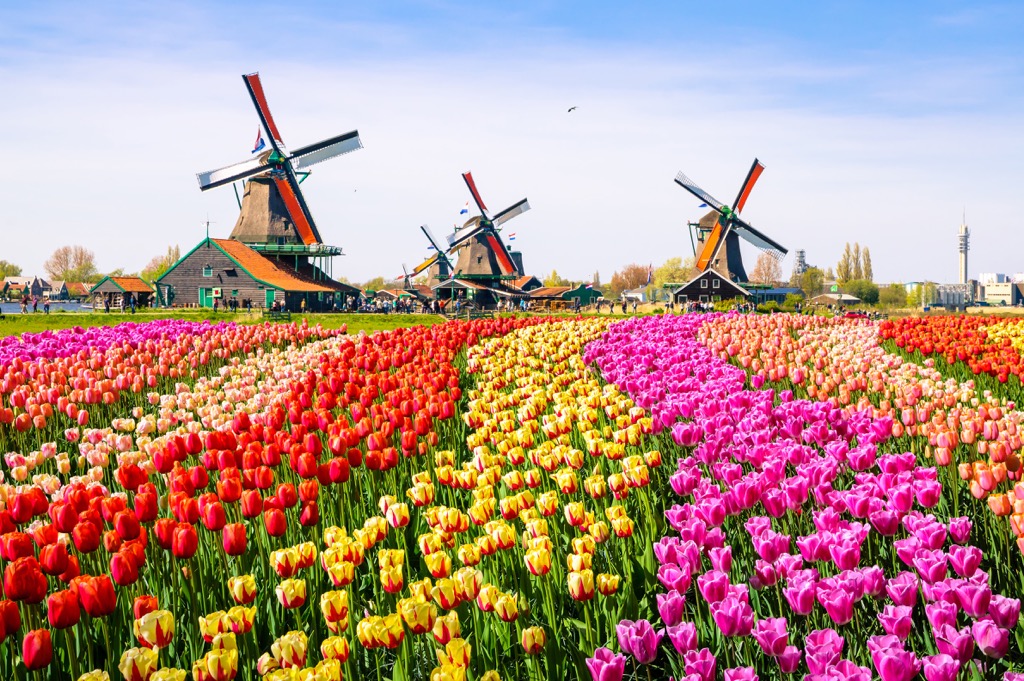
The Netherlands (Nederland) is a country located in northwestern Europe, with overseas territories in the Caribbean. The Netherlands is sometimes informally referred to as Holland.
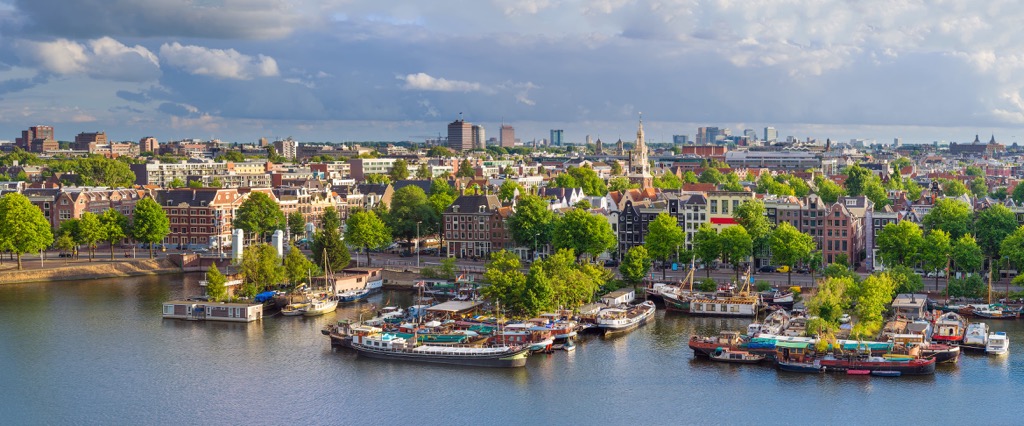
The Netherlands covers an area of approximately 41,865 sq km (16,164 sq mi), making it the 22nd smallest European country. With a population of 17.7 million people, it’s the 2nd most densely populated country in the European Union (EU).
The Netherlands borders Belgium to the south and Germany to the east. The mainland has a 451 km (280 mi) long coastline that borders the North Sea.
The Netherlands' overseas territories are known as the Caribbean Netherlands. They consist of three islands: Bonaire, Sint Eustatius, and Saba. Bonaire forms a part of the Leeward Antilles and is located approximately 90 km (56 mi) off the coast of Venezuela.
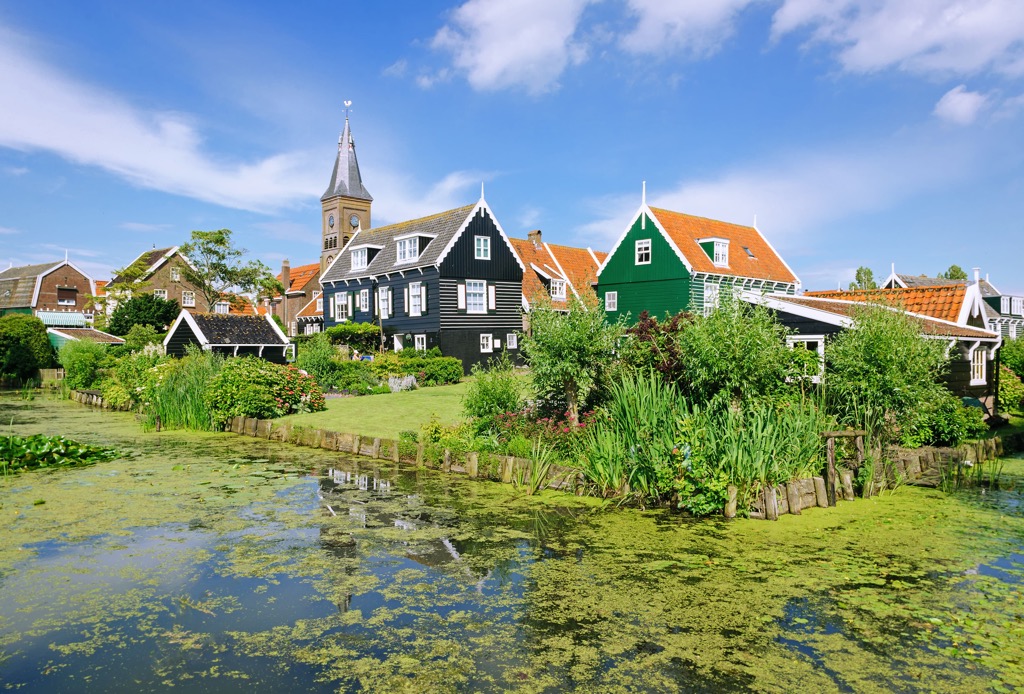
Sint Eustatius and Saba are part of the Lesser Antilles island group located approximately 280 km (174 mi) southeast of Puerto Rico. Bonaire is significantly larger than the rest of the Dutch Caribbean, covering an area of 288 sq km (111 sq mi). The Caribbean Netherlands has a total area of 328 sq km (127 sq mi).

The Netherlands is split into 12 provinces:
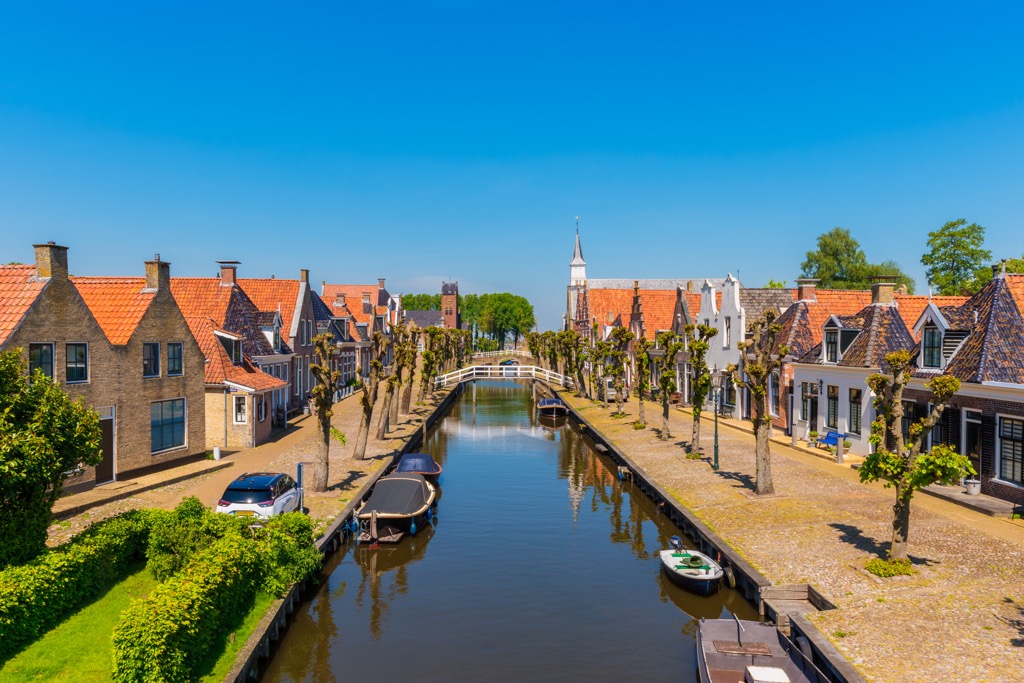
The largest province in the Netherlands is Friesland, which encompasses an area of approximately 5,749 sq km (2,220 sq mi). The populous province in the Netherlands is South Holland.
The name Netherlands translates to "lower countries," which is reflected in its geography. Only around 50 percent of the Netherlands exceeds 1 m (3.2 ft) above sea level, while 26 percent of the country is below sea level.
Most areas below sea level are human-made, resulting from peat extraction and land reclamation. Sea and lake reclamation accounts for roughly 17 percent of the Netherlands' total area.
Most of the country is flat, except for the Dutch Mountains in the southeast, with Vaalserberg (322 m/ 1,059 ft) in Limburg as the highest point on the mainland. There are also some minor hill ranges in the country's central areas.
The Netherlands is cut in half from east to west by the Grote rivieren, or "great rivers." The main rivers in the Grote rivieren are the Nederrijn, Lek, Waal, Merwede, and Meuse. They form a part of the Rhine–Meuse–Scheldt delta system.
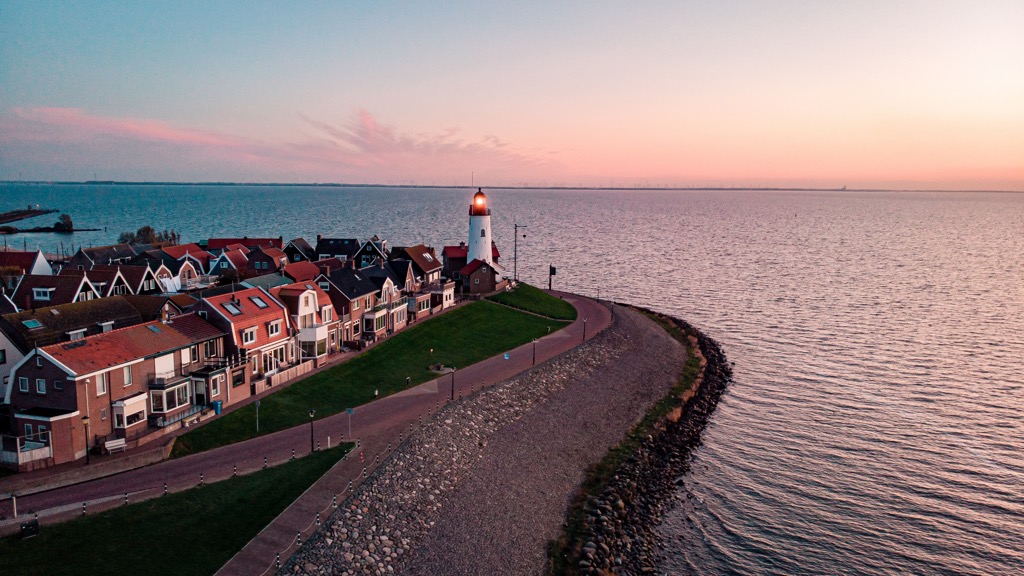
The largest lake in the Netherlands is Lake IJssel (IJsselmeer), an enclosed inland bay with a surface area of approximately 1,100 sq km (420 sq mi). Lake IJssel borders the provinces of Flevoland, North Holland, and Friesland.
The largest and capital city of the Netherlands is Amsterdam. Other notable cities include The Hague, Rotterdam, Utrecht, and Eindhoven.
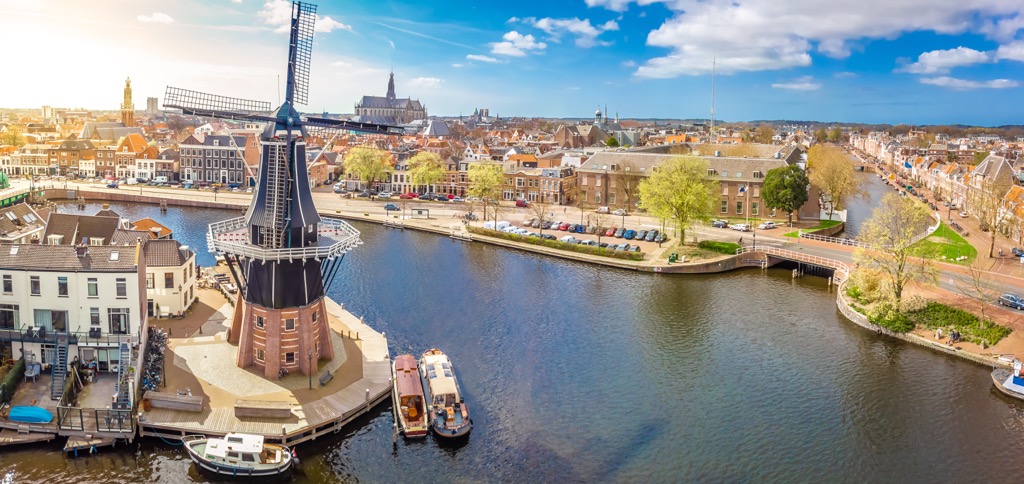
The Netherlands' mainland is tectonically quiet, with most of the country's geology linked to the interaction between four major rivers: the Rhine, the Meuse, the Schelde, and the IJssel. Glaciation and the North Sea have also played prominent roles in the Netherlands' formation.
Some of the oldest rocks in the Netherlands are from the Carboniferous period between 360 and 299 million years ago. This outcrop was discovered in the southeastern province of Limburg.
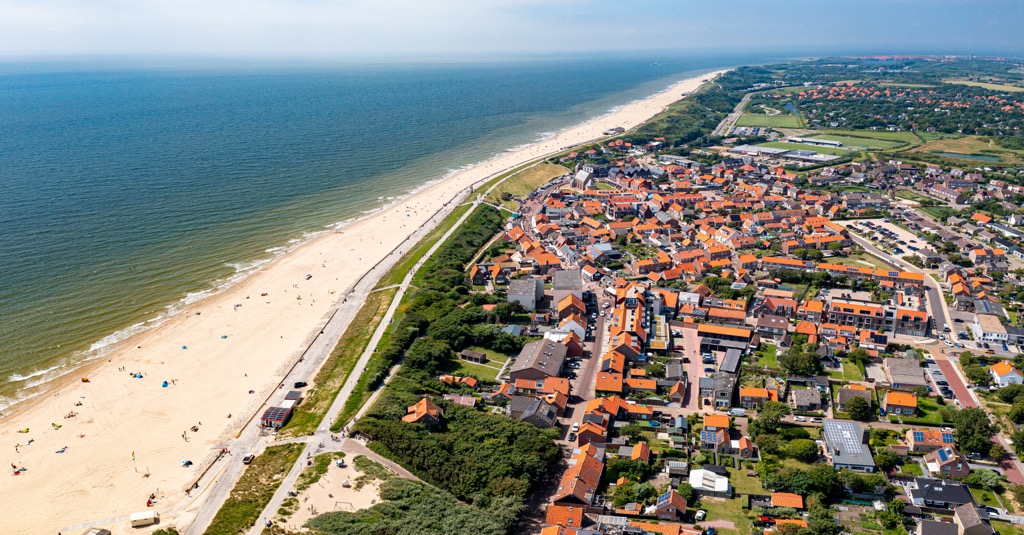
Rocks from the Mesozoic Era have been uncovered in the Netherlands. Posidonia Shale from the Jurassic period can be found deep below the surface in the country's west and below the North Sea. Additionally, there are Triassic Muschelkalk limestones present in the Winterswijk quarry in Gelderland.
During the Cretaceous period, the Netherlands was under a shallow sea. As a result, fossil-rich fossil-rich chalk was deposited, with several mosasaur fossils discovered in the country's south.
Most of the recent geological formations in the Netherlands are sediments from the Pleistocene and Holocene. This sedimentation is the result of marine, glacial, and aeolian activity.
In the east of the Netherlands is evidence of the Saale glaciation, which ended around 130,000 years ago. This glaciation pushed moraine northwards, creating a low long hill line in the country's east.
Much of the west of the Netherlands was created by human water management and land reclamation. The use of dykes and windmills reduced the water level, creating parcels of land called polders.
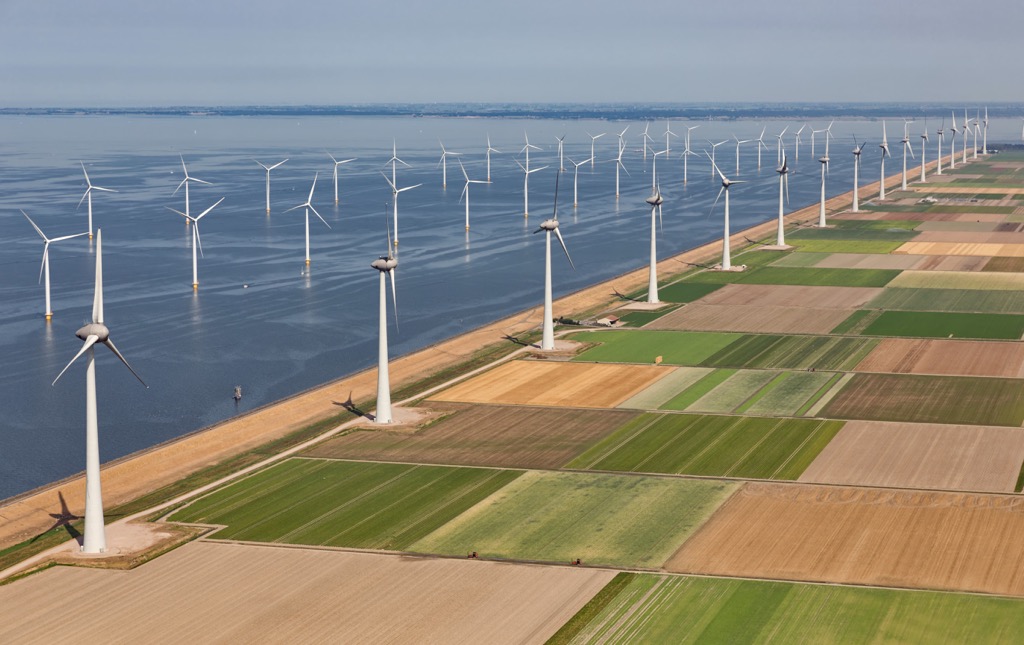
Today, the Netherlands is one of the flattest countries in the world. Most of the Netherlands' high points are in the Caribbean Netherlands, such as The Quill (601 m/1,972 ft) on Sint Eustatius and Mount Scenery (887 m/2,910 ft) on Saba.
The Netherlands is home to 20 national parks that protect an array of rare flora and fauna. Read on to learn about the Netherlands' wildlife.
Some of the most common mammalian species in the Netherlands are red foxes, red deer, Central European boars, European badgers, and European hares.
Wolves went extinct in the Netherlands around 140 years ago but have recently returned, with the occasional gray wolf sighting since 2015.
The black-tailed godwit is the national bird of the Netherlands. Blackbirds, sparrows, and starlings are among the most common bird species in the Netherlands.

Many migratory bird species spend part of the year in the Netherlands, such as Atlantic puffins, three-toed sandpipers, and widgeons. Other notable bird species include Eurasian eagle-owls, white storks, common buzzards, house finches, and red-breasted geese.
Few reptile species inhabit the Netherlands' mainland. The country is home to three snake species, including one venomous snake, the common European adder.
The North Sea, just off the Netherlands' coastline, is home to some fascinating aquatic creatures, such as gray seals, Risso's dolphins, and basking sharks. Numerous fish species can be found in the Netherlands' waterways, including perch, cod, bream, whiting, pike, and zander.
Insect species are in significant decline across the Netherlands. Since the 1990s, approximately 75 percent of flying insect species have disappeared. Still, many vibrant butterfly species live in the Netherlands, including graylings, silver-washed fritillaries, purple emperors, and painted ladies.
Roughly 10 percent of the Netherlands is forested. The most common trees in the Netherlands are oaks, beeches, elms, lindens, and pines. The last of the Netherlands' primeval forests were cut down by 1871.
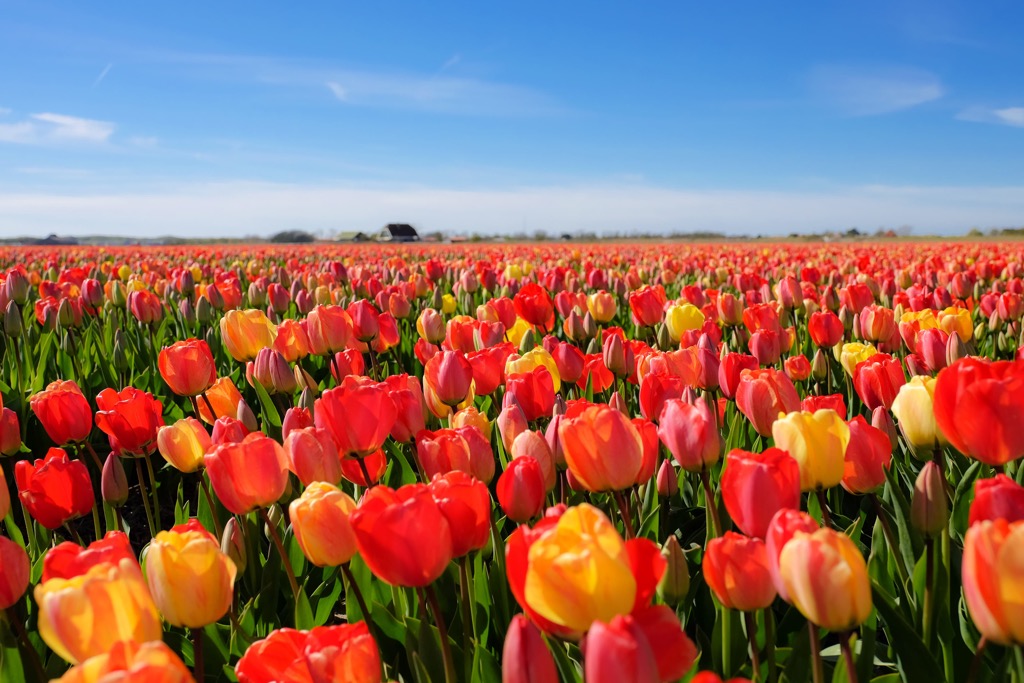
The Netherlands is nicknamed "the land of flowers," as countless species thrive in the country's temperate climate. In the spring, crocuses, daffodils, and hyacinths are common. In the summer, gladiolas, dahlias, carnations, and asters are in bloom.
The national flower of the Netherlands is the tulip. Tulips are synonymous with the Netherlands and can be seen blossoming across the country between March and May.
The oldest evidence of humans inhabiting the Netherlands are 250,000-year-old Neanderthal remains found near the southeastern city of Maastricht.
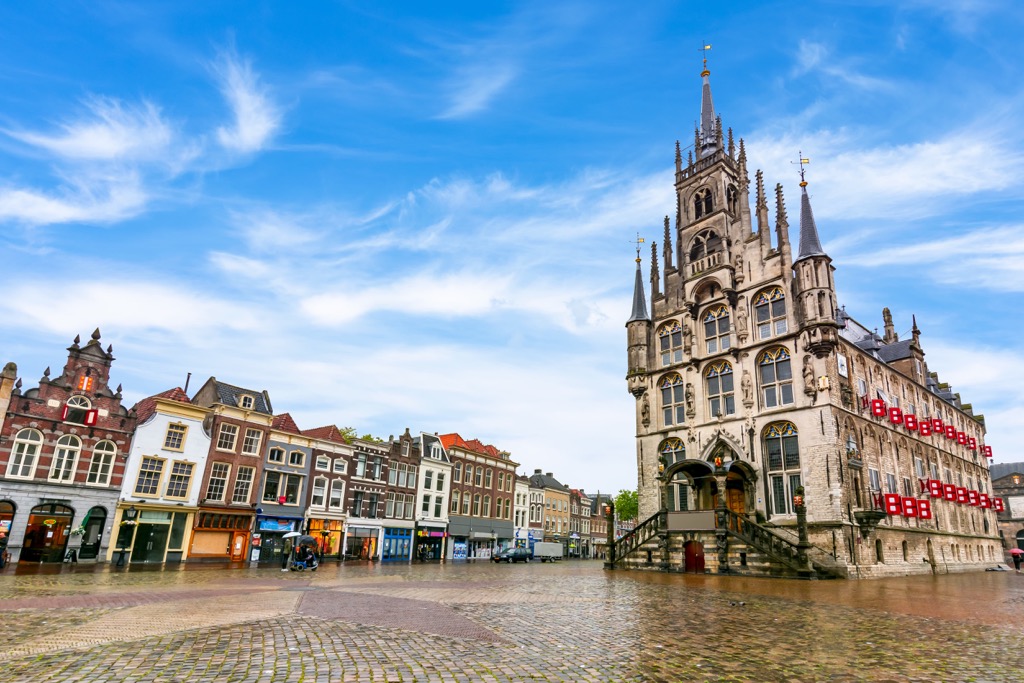
Several ancient cultures lived in the Netherlands after the end of the Last Glacial Period. The earliest was the Paleolithic Hamburg culture, which hunted reindeer across the country between 10,000 and 13,000 BCE.
During the Iron Age from around 800 BCE, the Hallstatt culture was influential in the Netherlands. The Hallstatt's King's Grave of Oss (Vorstengraf) from 700 BCE is one of the largest burial mounds in western Europe, measuring 3 m (9.8 ft) high and 54 m (177 ft) in diameter.
From 250 BCE, the Netherlands was home to several cultures and tribes. One of the most significant is the Ingaevones, a Germanic tribe that would develop into the Saxons and Frisians.
Until the Roman conquest, the Celtic La Tène culture inhabited the southern areas of the Low Countries. By 50 BCE, the Romans had taken control of the areas to the west and south of the Rhine.
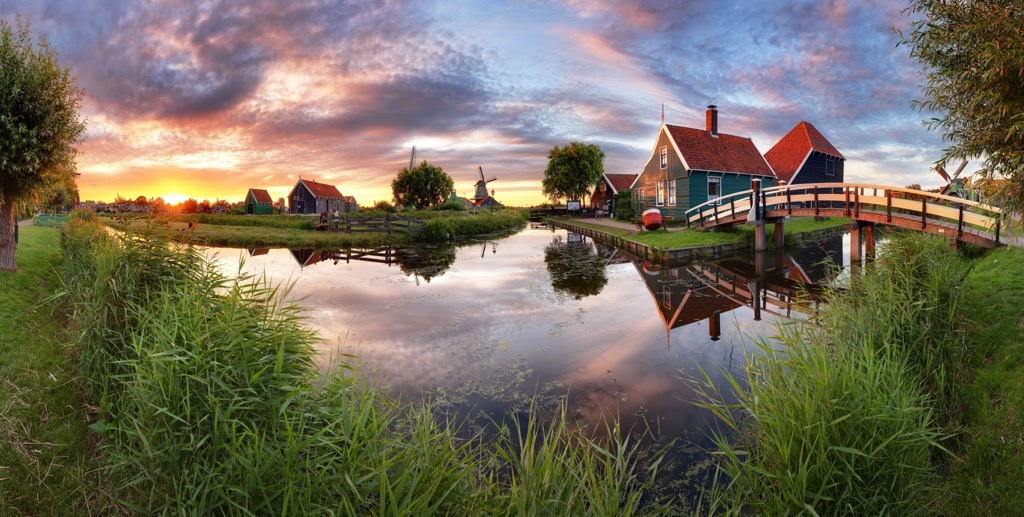
Following the collapse of the Roman Empire, most of the Netherlands was ruled by the Frankish Kingdom. By the eighth century CE, the Franks controlled most of western continental Europe. In 734, at the Battle of the Boarn, The Franks defeated the Frisian Kingdom to take full control of the Netherlands.
In the ninth century, the Frankish Carolingian Empire was split in three, with the Netherlands becoming part of Middle Francia. The Holy Roman Empire ruled the Netherlands between the eleventh and twelfth centuries.
Following the emergence of the County of Holland, Philip the Good, Duke of Burgundy, became ruler of the Low Countries, starting Burgundian rule. Philip's heirs belonged to the Habsburg dynasty, which ruled the Low Countries from 1384 to 1581.
In the sixteenth century, Charles V, the King of Spain and ruler of the Holy Roman Empire, took control of the Netherlands. This change in rulership was one of the causes of the Eighty Years' War, also known as the Dutch Revolt.

This bloody conflict continued until 1648 when Spanish King Phillip IV finally recognized the independence of seven northwestern provinces of the Netherlands during the Peace of Münster.
Following independence, the Netherlands went through a period of economic and cultural prosperity, setting up colonies and trading posts around the world. The Netherlands became Europe's largest maritime trader during the Dutch Golden Age. At this time, Amsterdam was the wealthiest trading city in Europe.
However, simultaneous wars with the French, English, and Germans weakened the Dutch Republic significantly. In 1795, conflict with the French Republic led to the downfall of the Dutch Republic.
Subsequently, the Dutch Republic was replaced with the Batavian Republic. From 1806 to 1810, the Batavian Republic became the Kingdom of Holland, which was set up by Napoleon and ruled by his brother Louis Bonaparte.

Following the fall of Napoleon, the Netherlands and Belgium were united into one kingdom following the Congress of Vienna. However, the kingdom's south rebelled, becoming an independent Belgium in 1830. The Netherlands abolished slavery in 1863, with a ten-year transition in Suriname ending in 1873.
The Netherlands was neutral during World War I and was a large importer of goods to Germany. Germany invaded the Netherlands in World War II on 10 May 1940.
This invasion resulted in the death of over 100,000 Jewish people from the Netherlands, many of which were transported to concentration camps. Between 1944 and 1945, the First Canadian Army liberated the Netherlands.

The Charter for the Kingdom of the Netherlands reformed the political structure of the Netherlands, leading to decolonization. Indonesia became independent prior to the charter in 1949.
In the following years, the Netherlands strengthened political ties with allies worldwide, helping to form the Benelux, NATO, the European Economic Community (EEC), and the EU. The Dutch Antilles was dissolved in 2010, with Bonaire, Sint Eustatius, and Saba becoming special municipalities of the Netherlands.
Today, the Netherlands is viewed as one of Europe's most socially progressive countries, with liberal laws on drug use, prostitution, abortion, and euthanasia. In 2001, the Netherlands became the first European country to legalize same-sex marriage.

Whether you're visiting the Dutch Caribbean or the mainland, the Netherlands boasts a wide variety of landscapes for hikers to enjoy.
Ensure you're well-prepared before setting out on a hike in the Netherlands. Map out your route, bring plenty of food and water, and wear appropriate clothing. Check weather forecasts and inform others of your intended itinerary.
Read on to learn about some of the best hikes in the Netherlands.
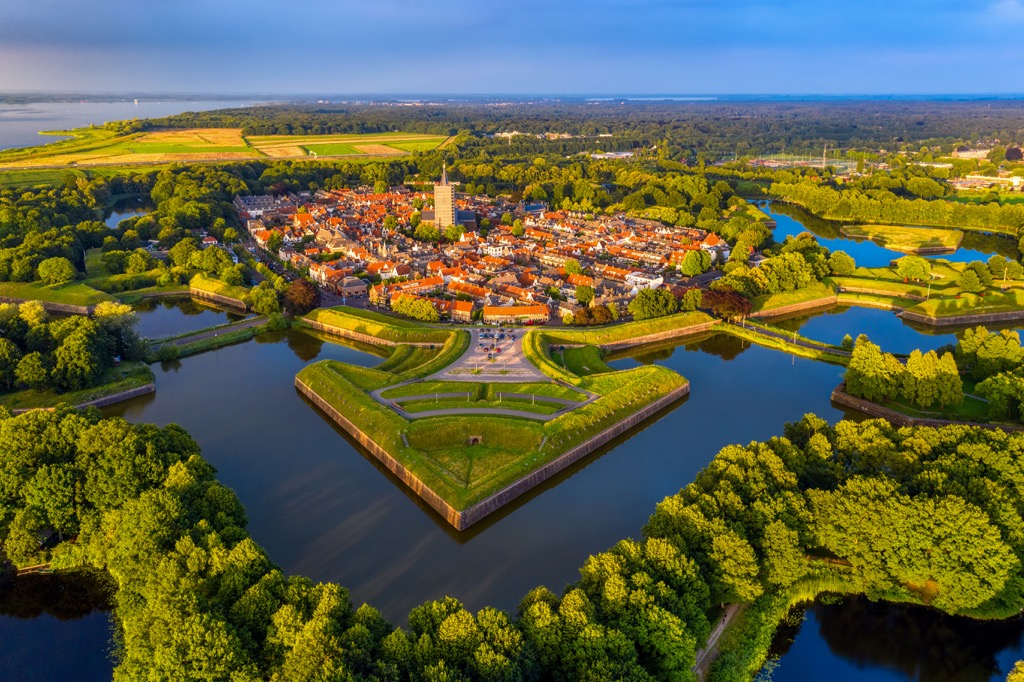
Vaalserberg (322.7 m/1,059 ft) is the highest mountain on the Netherlands' mainland. Perhaps the term mountain is a generous way to describe Vaalserberg with its modest height, but it's still well worth climbing if you're looking to bag the highest peak in the Netherlands.
Vaalserberg is located just outside the town of Vaals and is significant as it forms a tripoint between Germany, Belgium, and the Netherlands. Follow Grensroute (GR) 6 Border Triangle Route to climb to the summit of Vaalserberg from the Dutch side.
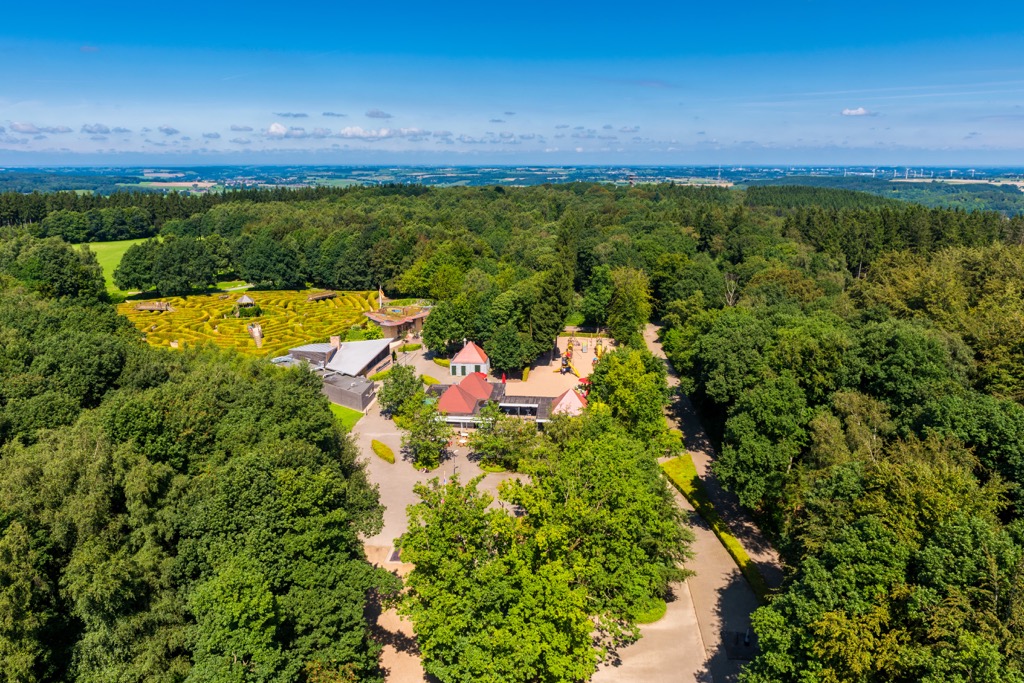
From Bloemendal Castle (Kasteel Bloemendal) in Vaals, this trail leads past the Kleng Wach museum straight to the summit of Vaalserberg. Atop Vaalserberg is the Wilhelminaturm, a 35 m (115 ft) tall observation tower with a restaurant.
The trail then loops back around through the Waldgebiet Malenbosch nature reserve, past Lemiers Castle (Kasteel Lemiers), and back to the starting point in Vaals. This trail is approximately 15.2 km (9.4 mi) in length.
Wilheminaberg (227 m/745 ft) is the second-highest hill in Limburg. Wilheminaberg isn't a natural hill but is a slag heap composed of stone waste from underground mining. In the 1970s, it was converted into a recreational area with an artificial ski slope.
It's possible to hike to the top of Wilhelminaberg, which affords panoramas of Limburg's countryside. The Pungelroute is a popular nearby trail that'll take you on a relaxing stroll through Gravenrode Park, which is filled with picturesque lakes and gardens.
The trail doesn't lead directly up Wilheminaberg, but with a short detour at the start of the trail you'll be able to climb the stairs to the hill's summit. This route is approximately 4.5 km (2.7 mi) in length.
Tankenberg (85 m/279 ft), despite its low elevation, is one of the best hills outside of the "Dutch Mountains.” On the north slope of Tankenberg is a dome-roofed gazebo built in 1844, which offers sweeping views toward Germany.
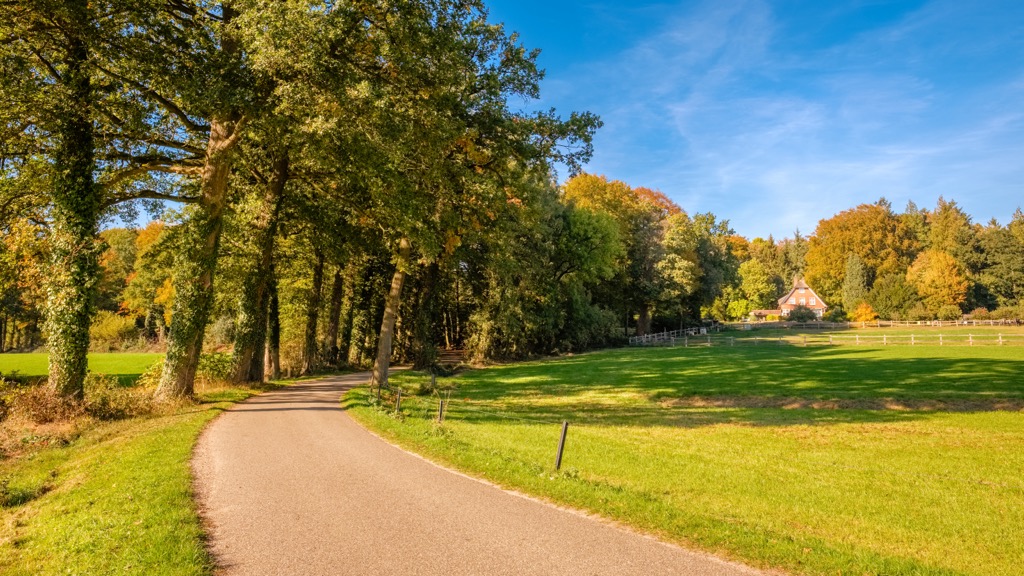
Tankenberg is a popular hiking and biking destination with trails leading up several sides. The walk to the summit of Tankenberg is short, but it's possible to extend your walk to the nearby hill of Paaschberg (80 m/262 ft).
Starting from the Tankenbergweg parking lot (Parkeerplaats Tankenbergweg), this trail leads directly up Tankenberg following the Tankenbergweg. You'll then walk along the Siemerweg, Tichelweg, and Belvedereweg before passing through the Landgoederen Oldenzaal.
From the top of Paaschberg, the trail loops back around to your starting point. This trail is approximately 8.7 km (5.4 mi) in length.
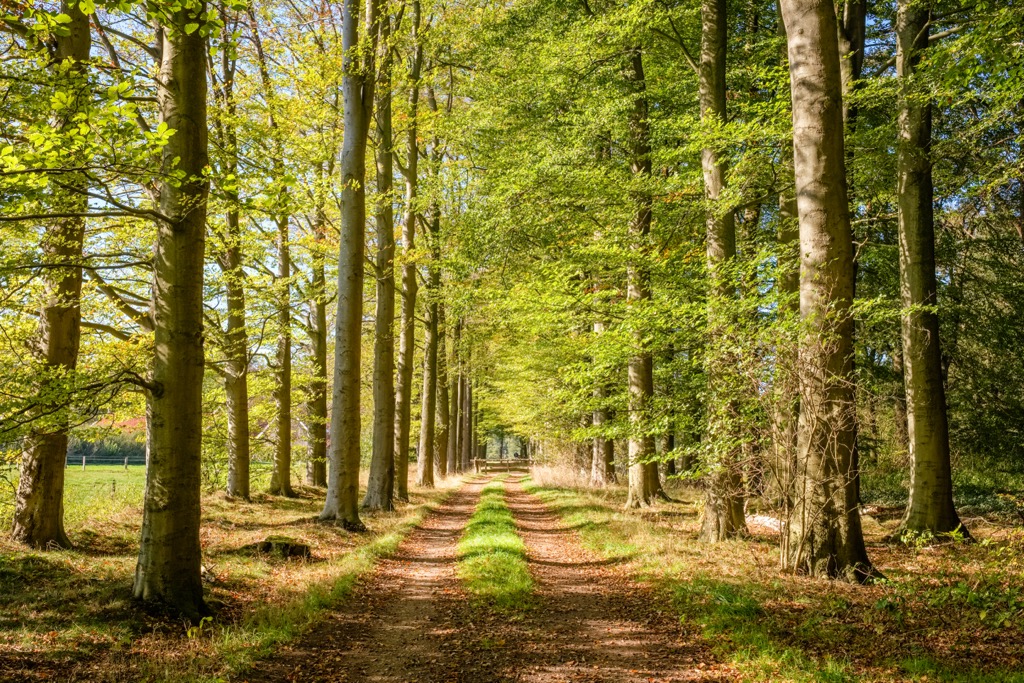
Natuurwandelroute (N) 70 is one of the most memorable hiking routes in the Netherlands. It leads around the countryside near the town of Beek, scaling several hills, and takes in some of the best views of a landscape carved by the Waal and Rhine rivers. The N70 is considered by many to be the most beautiful trail in the country.
The trail begins at Little Bartholomew's Church (Kleine Barthelomeuskerk). It first leads up Ravenberg (102 m/334 m), and continues west to Hengstberg (83 m/272 ft). It then heads back east and scales Stollenberg (95 m/311 ft), Boterberg (91 m/298 ft), and Hanenberg (99 m/324 ft).
The N70 then loops back around to your starting point via Duivelsberg (75 m/246 ft) and Sterrenberg (65 m/213 ft). This trail is approximately 13.7 km (8.5 mi) in length.
There's no shortage of scenic lakeside hikes in the Netherlands, and one of the finest is the Reindersmeer loop. This small yet beautiful lake is located within De Maasduinen National Park (Nationaal Park De Maasduinen), close to the German border.
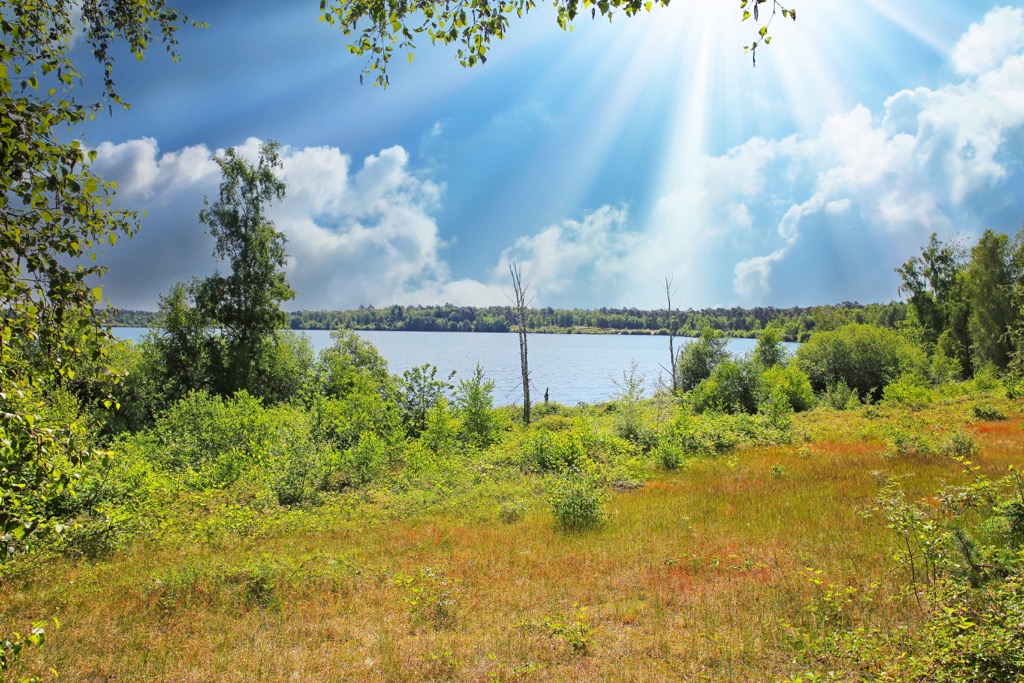
The park is famous for being home to the Netherlands' longest belt of river dunes. It's an excellent spot for nature watching, with countless bird species, including cranes, western marsh harriers, kingfishers, and black woodpeckers frequenting the area.
The trail around Reindersmeer is easy to follow. Start from the Bosserhiede road and follow the obvious trail around the lake's edge in either direction. The trail is approximately 10.1 km (6.3 mi) in length.

Oisterwijkse Bossen en Vennen in North Brabant is home to the finest fens in the Netherlands, with marshlands, numerous ponds, and woodlands to explore. The trail systems here are well-maintained, and Oisterwijkse Bossen en Vennen is hugely popular with nature watchers.
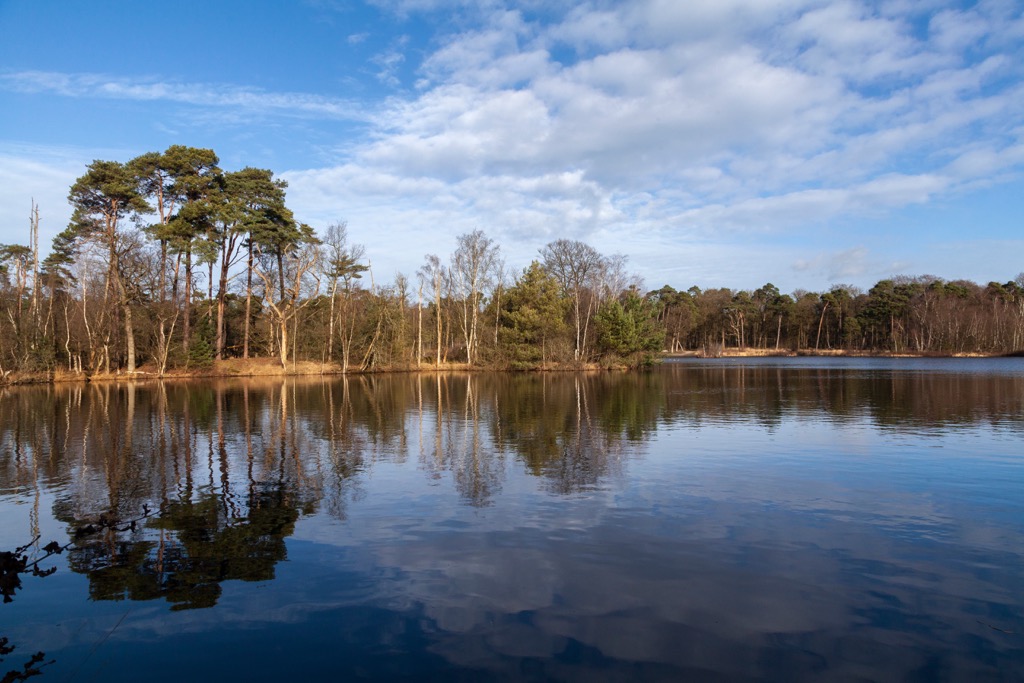
One of the best hikes in Oisterwijkse Bossen en Vennen is the Wandelroute 14 Vennen. You can pick up this trail from the Oisterwijk Visitor Center (Bezoekerscentrum Oisterwijk).
The trail weaves through the nature reserve, passing several minor lakes such as Van Esschenven, Staalbergven, and Voorste Goorven. You'll pass through heathlands and forests, where you might get lucky and encounter a woodpecker or two.
The Wandelroute 14 Vennen is simple to follow, with blue arrow markers along the entire route. This trail is approximately 10 km (6.2 mi) in length.
Picturesque canals, countless historical sites, and delicious Dutch cuisine await hikers visiting the Netherlands' largest settlements. Read on to find out about the Netherlands' main cities and towns.
Amsterdam is the capital and largest city in the Netherlands. It's the principal city in the Randstad, a conurbation of the four biggest cities in the Netherlands (Amsterdam, Rotterdam, The Hague, and Utrecht).

Amsterdam is one of Europe's top tourist destinations, with world-famous cultural attractions, unique delicacies, and vibrant nightlife. Amsterdam is one of the most multicultural cities in the world, with over 170 nationalities represented.
Amsterdam is home to attractions that cater to all tastes, from the Van Gogh Museum to the Anne Frank House to the Heineken Experience. Consider booking a cruise down Amsterdam's iconic canal system if you're to experience the best of the city.
Amsterdam is located in the northwest of the Netherlands, close to the coastline. Luckily, the Netherlands is a relatively small country, and many of the best hikes are within a 2-hour drive of the capital. Popular hotels in Amsterdam include Corendon City Hotel, Hotel Jakarta, and Leonardo Hotel.

Rotterdam is the Netherlands' second city. It's famous for its port, which is the largest in Europe. Rotterdam is renowned for its unique architecture, with modern masterpieces like the Market Hall (Markthal), the Cube Houses (Kubuswoningen), and the Kunsthal art museum.
Rotterdam rivals Amsterdam for its multiculturalism and boasts many bars and restaurants, making it great for nightlife. If you're looking to sample authentic local delicacies, stop by the farmer's market in Noordplein or the Rotterdamse Oogstmarkt.
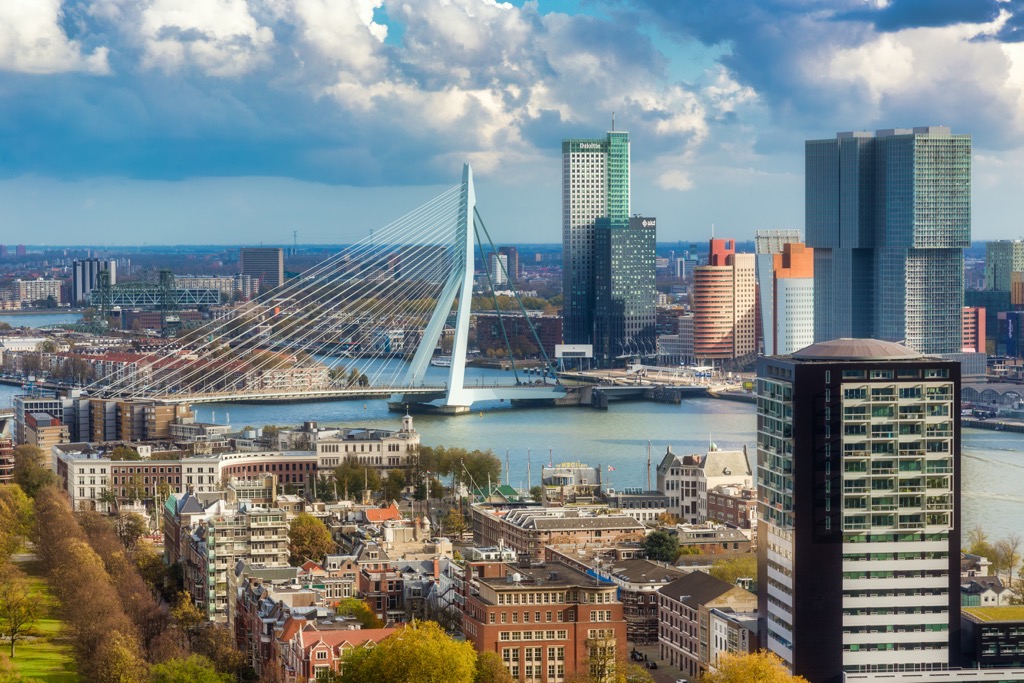
A part of the Randstad, Rotterdam less than 80 km (50 mi) from Amsterdam. Popular hotels in Rotterdam include Inntel Hotels, Hotel New York, and ss Rotterdam.
Resting on the Netherlands coastline is The Hague (Den Haag). The capital of South Holland and the Netherlands' third largest city, The Hague, is often considered the country's de facto capital. It's home to its main legislators, including the Cabinet and Supreme Court.
The Hague is a popular tourist destination, as it’s home to some of the finest beaches in the Netherlands. Plus, it's home to several stand-out attractions like the Mauritshuis art museum, the Madurodam miniature park, and the Duinrell amusement park.
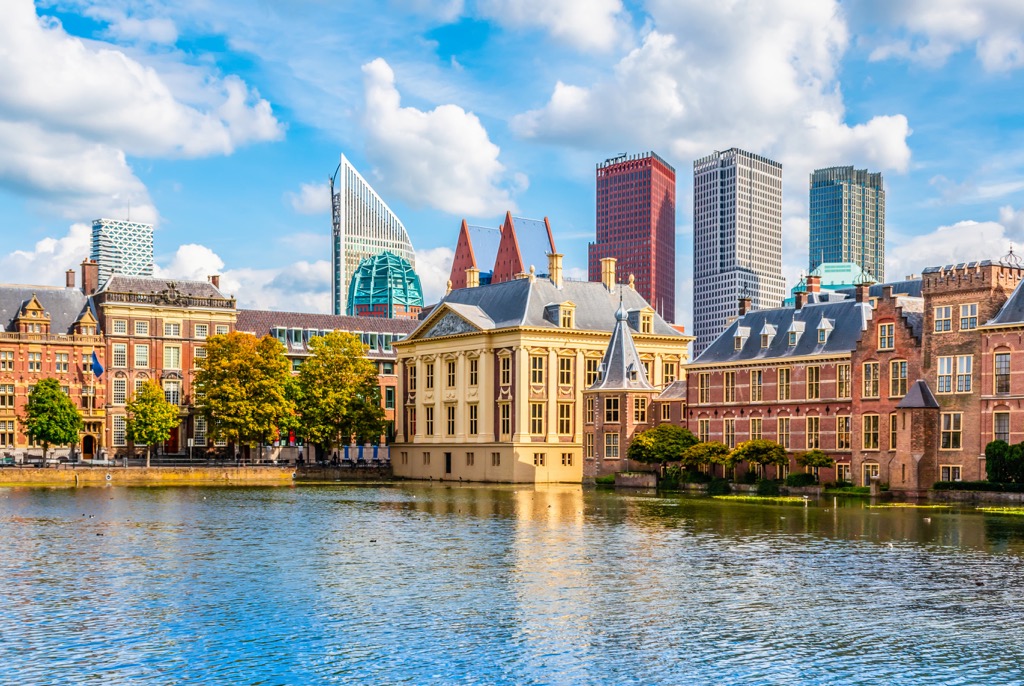
The Hague is less than 25 km (15 mi) from Rotterdam and forms a part of the Rotterdam-The Hague metropolitan area, which has a population of over 2.6 million people. Popular hotels in The Hague include Boutique Hotel Corona, The Collector, and Park Centraal Den Haag.
Eindhoven is the fifth-largest city in the Netherlands and the largest city outside the Randstad. The most populous city in North Brabant, Eindhoven is one of the Netherlands' centers of design and technology, home to the Philips headquarters and Design Academy Eindhoven.
Eindhoven is also a university city with many top-quality bars and restaurants. Popular attractions in Eindhoven include Van Abbemuseum, Dierenrijk zoo, and St. Catherine's Church (Catharinakerk).
Eindhoven is located in the south of the Netherlands and is less than 100 km (62 mi) from the best of the Dutch Mountains. Popular hotels in Eindhoven include Van der Valk Hotel, Hotel Pullman, and Tulip Inn.
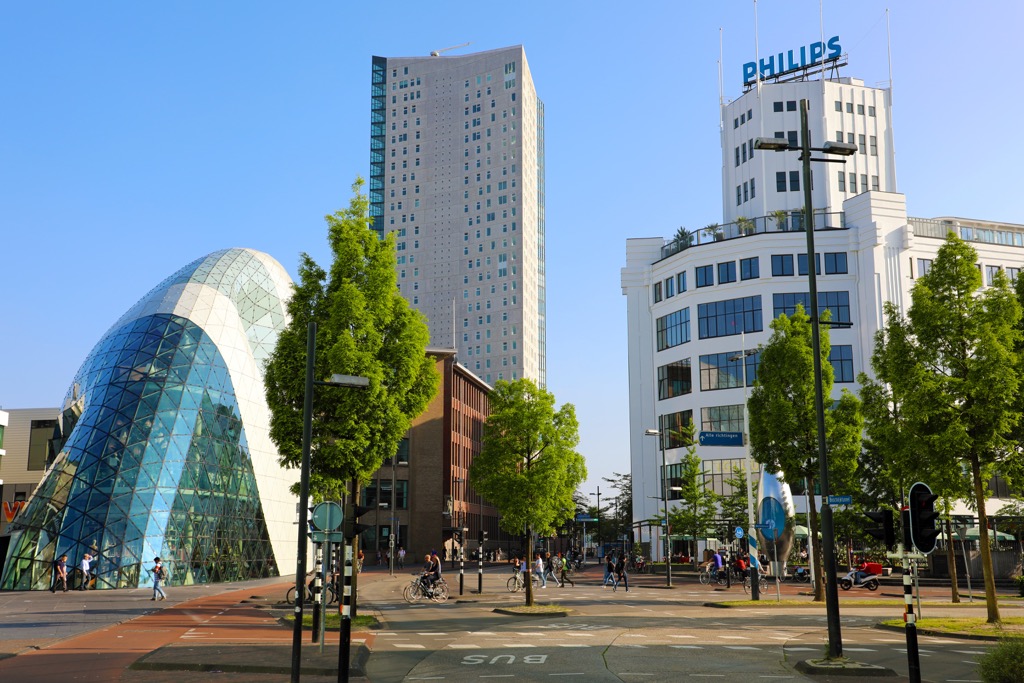
Groningen is the capital of the Groningen province and the sixth-largest city in the Netherlands. Groningen is a student city, with approximately 25 percent of its population attending university, making it the city with the youngest population in the Netherlands.
As a result, Groningen is a lively city with plenty of great eateries and shopping opportunities. Popular attractions in Groningen include the Groninger Museum, University Museum (Universiteitsmuseum), and Hortus Haren botanical garden.
Groningen is located on the northern tip of the Netherlands and is the perfect base for those planning to explore the local countryside, including Lauwersmeer National Park (Nationaal Park Lauwersmeer). Popular hotels in Groningen include Martini Hotel, Leonardo Hotel, and Best Western.
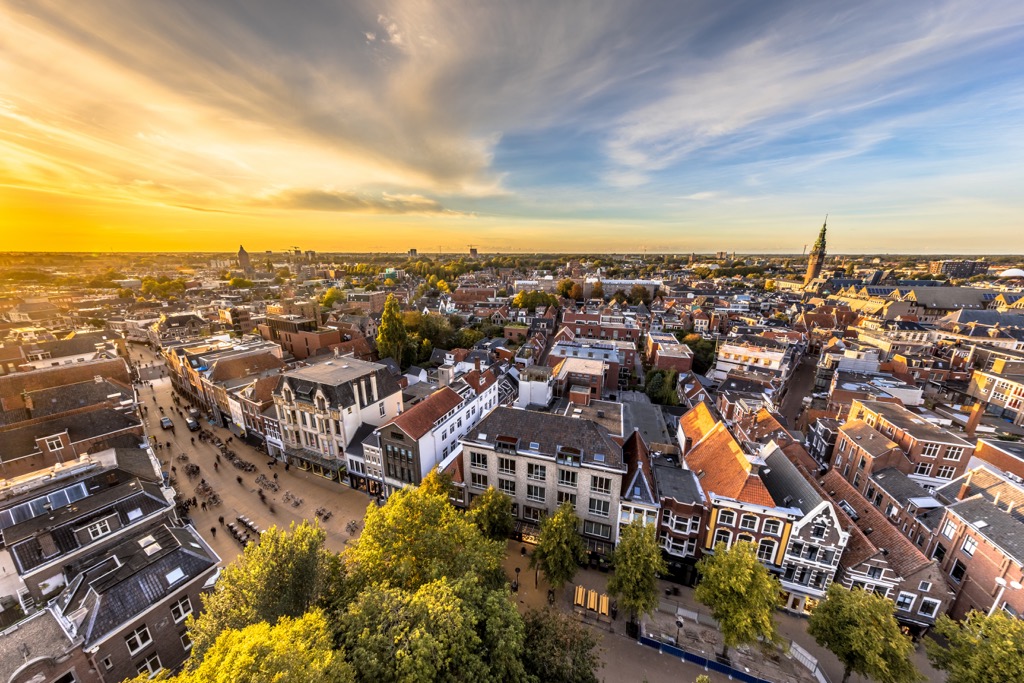
Explore Netherlands with the PeakVisor 3D Map and identify its summits.








